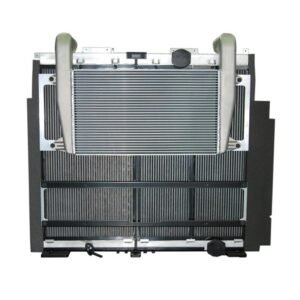How Does The Cooler Improve Heat Exchanger Performance?
According to the survey, the structure of the cooler was optimized and improved, and the thermal performance of the heat exchanger before and after the improvement was tested using the platform-heat exchanger performance test bench. Two methods for enhancing the heat transfer performance of the cooler are proposed:
One is to design a heat exchanger (evaporator) fin tube that is easy to frost under low temperature conditions to be a variable pitch fin structure, which increases the heat transfer area of the fins inside the tube and increases the flow rate of the gas flow inside the tube.
The other is to design the equal-pitch internal threaded tube of the heat exchanger under the air conditioning condition as a variable pitch internal threaded tube to increase the disturbance of the airflow in the tube and improve the heat transfer coefficient. The thermal performance of the heat exchanger improved by these two methods was calculated. The results show that the heat transfer coefficient is increased by 98% and 382%, respectively.
At present, the most common and widely used at home and abroad is the partition wall type. The design and calculation of other types of coolers are often borrowed from the partition wall heat exchanger. Research on heat exchangers has focused on how to improve their heat transfer performance.

A cooler and a heat exchanger are two different devices used in thermal management systems.
- Cooler: A cooler is a device that removes heat from an object or a system, typically by using a cooling medium such as air or liquid. It transfers the heat away from the object to lower its temperature. Coolers are commonly used in various applications, including refrigeration systems, air conditioning units, and computer cooling systems.
- Heat exchanger: A heat exchanger is a device designed to transfer heat between two fluids, without them mixing together. It facilitates the exchange of thermal energy from one fluid to another. Heat exchangers are widely used in industrial processes, heating and cooling systems, power plants, and other applications where efficient heat transfer is required.
While both coolers and heat exchangers involve the transfer of heat, their primary functions differ. A cooler is specifically designed to remove heat from an object or system, whereas a heat exchanger enables the transfer of heat between two separate fluids while keeping them physically separated.
Post time: Aug-20-2022